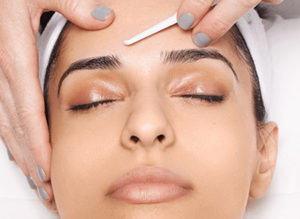Dermaplaning

Dermaplaning
Dermaplaning is a treatment performed by trained Medical Esthetic Professionals using a surgical scalpel on tautly stretched skin to remove dead skin cells and fine, vellus hair (peach fuzz). It is an extremely safe, non-invasive method of skin rejuvenation. People often think that shaving and Dermaplaning are one in the same. Most razors have two blades that are much duller than a surgical blade. Dermaplaning requires short strokes at a 45 degree angle in particular pattern and resurfaces skin on a much deeper and more effective level than shaving.
Dermaplaning FAQs
Schedule a free consultation to hear about all of the different Dermaplaning treatments we offer!
Is Dermaplaning Safe?
Dermaplaning is an extremely safe, non-traumatic method of skin rejuvenation. There is no more risk than when a man shaves his face. Although unlikely, there is a chance of a small scrape or nick in the skin. Dermaplaning is also perfectly safe if you’re pregnant or nursing and want a deep exfoliation without a more aggressive option like a chemical peel. It helps keep your skin clean and clear of superficial hyperpigmentation that can occur during hormonal fluctuations as well.
Will my hair grow back faster or thicker?
No. This is physiologically impossible. There are two types of hair that grow on your body. Vellus hair, which when cut or removed will grow back the same size and shape, therefore, the main structure of vellus hair does not change and is not altered by dermaplaning. Terminal hair however, is physiologically coarse. When this hair type is cut it will always grow back coarse. Dermaplaning is designed to treat the vellus hair, which is located on the face. Once vellus hair is cut it will maintain a blunt edge and this blunt edge will not physiologically alter the hair itself.
Is there any down time with Dermaplaning?
Dermplaning has zero downtime. You will need to wear sunscreen after the treatment (although you should always wear sunscreen!) to reduce chance of redness.
How often can I get a Dermaplaning treatment?
Dermaplaning is usually performed every three-four weeks. Treating the skin in this manner actually removes about two-three weeks worth of dead skin cells. The skin needs to complete its normal thirty day rejuvenation cycle before the treatment is done again.
Dermaplaning Benefits
- Promotes smoother, softer skin.
- Removes soft facial hair that traps dirt and oil.
- Dermaplaning enhances the effectiveness of other skincare treatments such as enzymes, hydrafacials and chemical peels by providing deeper product penetration.
- Reduces recent acne scars
- Reduces fine lines
- Minimizes the appearance of large pores
- Produces immediate results with no downtime
Contraindications for Dermaplaning
- Current or recent use of accutane, eczema, dermatitis, malignant skin tumors, open lesions, lupus, active herpes infection, sunburn and keratoses.
- Cancer therapy (chemotherapy, radiation)
- Avoid going to a tanning bed two weeks prior to treatment. This practice should be discontinued due to the increased risk of skin cancer and signs of aging.
- Waxing/threading or use depilatory creams for 7 days prior.
- Cosmetic injections for 2 weeks before and after treatments.
- Refrain use of Tretinoin, Retin-A, Renova, Differin, Tazorac, Avage, EpiDuo, Ziana and high-percentage AHA and BHA products for approximately 7 days prior to treatment. Consult your Physician before temporarily discontinuing use of any prescription medications.
Want to learn more about our treatments and choose the right one for you? Schedule your free consultation!

